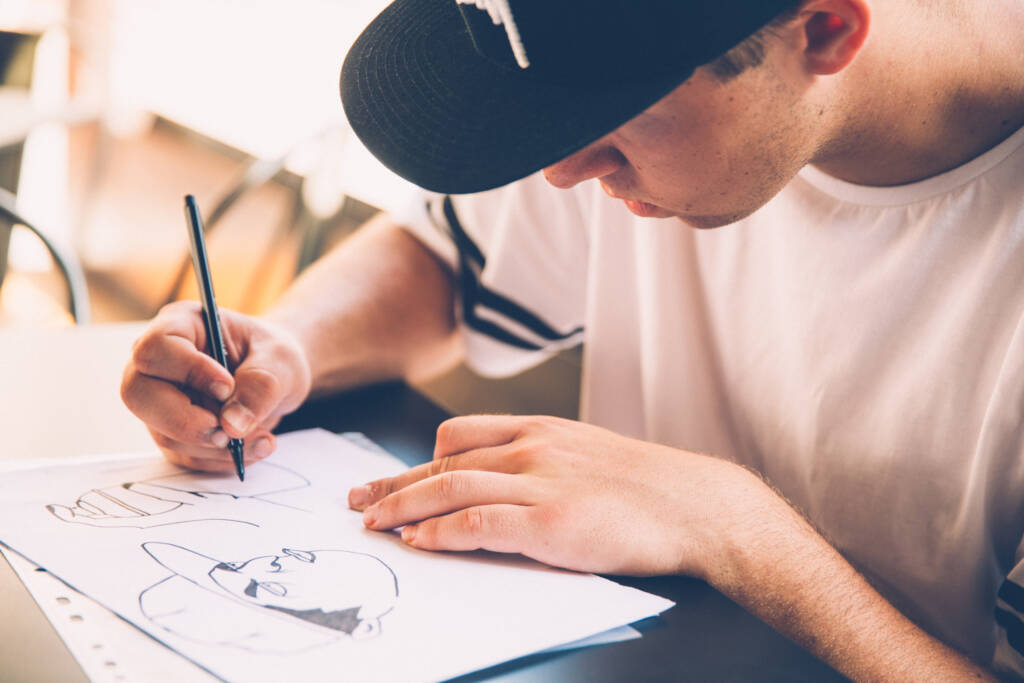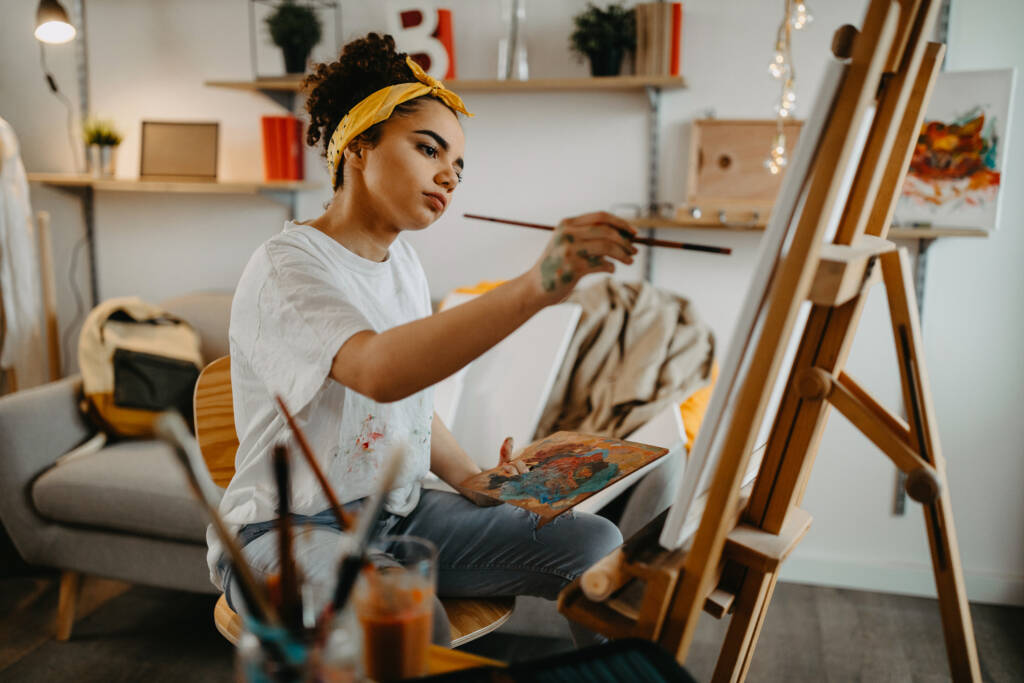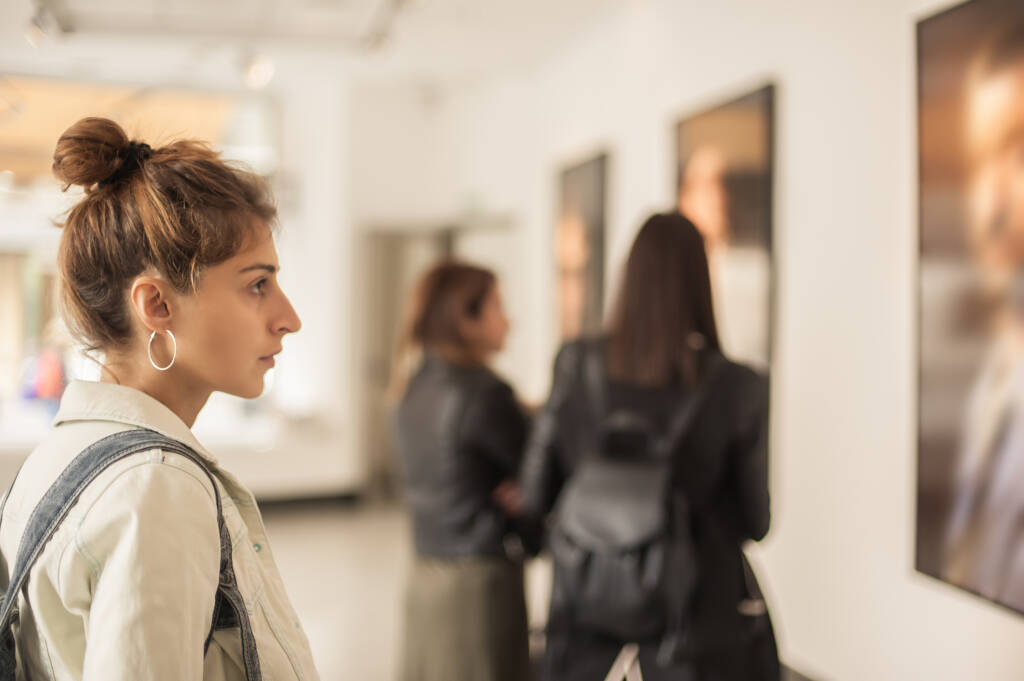
Painting I

Projects allow students to demonstrate competence and understanding of concepts and skills by completing a career-related task. For example, the assignment might be to create a mural, a package design, a speech, a film review, or a movie set – you name it! These creative projects are about applying your learning acquired through in-depth research to real-world career tasks.
Each competency will be addressed through a project that is based on a real-life career task. Here are the careers you will explore: Studio Instructor, Children’s Book Illustrator, Graphic Designer, and Craft Kit Developer,.
Projects
Art Studio Instructor
You will take on the role of a franchise art studio owner that hosts painting parties. You will teach the party goers the basic elements and techniques required of landscape portraits, along with understanding and using colors.
Children's Book Illustrator
You will take on the role of an illustrator for a publisher of children’s books, with a specialty in creating watercolor illustrations, tasked with creating a cover for a new children’s book.
Graphic Designer
You will take on the role of a graphic designer for a candy company, tasked with creating an image of a new candy advertisement using acrylics.
Craft Developer
You will take on the role of a craft product developer for an art supply company, tasked with creating a craft kit for a mixed media painting.
Competencies
Color Theory in Landscape Painting
Students will demonstrate an understanding of color theory in landscape painting by explaining the layout of the color wheel, comparing and contrasting a variety of color schemes, mixing colors, and applying color theory to an original landscape painting.
Watercolor
Students will demonstrate an understanding of watercolor by explaining the characteristics of watercolor, and applying watercolor techniques to create a painting.
Pop Art
Students will demonstrate an understanding of pop art by analyzing a variety of pop art artists’ paintings, explaining the characteristics of pop art, and creating their own pop art-inspired painting.
Mixed Media
Students will demonstrate an understanding of mixed media by defining mixed media, analyzing mixed media paintings, and creating their own mixed media painting.
Experiences allow you to explore a career field you’re curious about while mastering competencies for school credit. Through experiential learning, you will learn skills and apply them to tasks you would complete as part of a career rather than completing traditional assessments like essays or tests. During your Experience, you’ll work with a professional in the field to support your learning whom we call a “mentor.” You’ll earn a badge for your accomplishments to share on social media and higher education platforms, or with colleges, potential employers, peers, and colleagues to display your qualifications.
Here’s how Experiences work:
- Each competency you work on is addressed through a separate deliverable predetermined by you and your instructor.
- Guided learning for each module consists of research and/or work with a professional in the field. Your instructor will coach you through this process.
- Each module culminates in a final demonstration of understanding, which includes a deliverable and a discussion-based assessment with your instructor.
- Here’s an example:
Let’s say you’re curious about a career in healthcare. You decide you’d like to learn about this career area, make a professional connection, earn a badge, and meet competencies for your 9th-grade English requirement. While enrolled in English 1 Experiences, you conduct research to better understand language and structure in writing. Then you may work with an Occupational Therapist to help apply your writing skills to the creation of an informational video about adaptive equipment for patients. The video aims to advise family members of patients regarding the use of accommodations and equipment to help patients perform daily tasks. Now you’ve earned the Language and Structure in Writing competency! This is just one example of the many ways Experiences can bridge competencies to careers.
Obtaining a Mentor: Prior to enrollment, please have an idea for a mentor in mind. We have partnered with hundreds of mentors you can work with during your Experience, who you can find in our Career Mentor Catalog here. Or, you may consult with our counseling department by emailing [email protected] for help in identifying one.
*A parent/guardian permission form and background check of the mentor are both required to work with mentors without parental supervision.
Competencies
Color Theory in Landscape Painting
Students will demonstrate an understanding of color theory in landscape painting by explaining the layout of the color wheel, comparing and contrasting a variety of color schemes, mixing colors, and applying color theory to an original landscape painting.
Watercolor
Students will demonstrate an understanding of watercolor by explaining the characteristics of watercolor, and applying watercolor techniques to create a painting.
Pop Art
Students will demonstrate an understanding of pop art by analyzing a variety of pop art artists’ paintings, explaining the characteristics of pop art, and creating their own pop art-inspired painting.
Mixed Media
Students will demonstrate an understanding of mixed media by defining mixed media, analyzing mixed media paintings, and creating their own mixed media painting.
